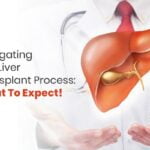
An uncommon form of cancer called rhabdomyosarcoma primarily affects adolescents and young children. Although it can happen everywhere on the body, it usually affects the head and neck, limbs and legs, as well as the reproductive and urinary systems. In India, rhabdomyosarcoma can be treated with surgery, chemotherapy, radiation therapy, and supportive care. There are numerous variables that can affect survival.
Depending on the kind of RMS implicated, patient outcomes vary greatly, with 5-year survival rates ranging from 35% to 95%; therefore, a correct diagnosis is crucial for efficient therapy and management. Accurate and prompt diagnosis is typically inappropriate because of the variety of Rhabdomyosarcoma tumors and the lack of potent genetic markers for the disease.
Compared to other wealthy nations like the USA and the UK, the overall cost of rhabdomyosarcoma therapy in India is fairly affordable. Major improvements in the management of rhabdomyosarcoma have been made in India. For the remainder of their lives, people must be watched for any potential side effects from rigorous chemotherapy and radiation.
One of the cancer kinds that affect the muscles is rhabdomyosarcoma. In kids and teenagers, it is most common. Mesenchymal cells, which form muscles, are where the disease first manifests itself. Rhabdomyosarcoma causes one or more tumors when the cells alter and grow out of control. Although rhabdomyosarcoma can grow everywhere on the body, the following regions are where it is most frequently found:
The location of cancer affects the rhabdomyosarcoma signs and symptoms. For example, indications and symptoms of cancer in the head or neck may include, among others:
The following symptoms and indicators could manifest if the cancer is in the reproductive or urinary systems:
The following symptoms and indicators could manifest if the cancer is in the reproductive or urinary systems:
Cancer in the arms or legs can present with a variety of symptoms, including but not restricted to:
A physical examination is often used to identify rhabdomyosarcoma in order to better understand the symptoms you or your kid are experiencing. On the basis of the results, other tests and procedures can be suggested.
To explore symptoms, find malignancy, and spot signs of cancer spread, your doctor can advise one or more imaging tests.
The following imaging examinations may be performed:
A sample of suspect cells is taken during a biopsy process and tested in a lab. Tests can identify the type of cancer and whether the cells are malignant.
Rhabdomyosarcoma is diagnosed by the use of the following biopsy procedures:
Needle Biopsy: The physician inserts a tiny needle beneath the skin and into the tumor. To remove tiny bits of tumor tissue, a needle is utilized.
Operative Biopsy: In an excisional biopsy, the entire tumor is removed, while a partial biopsy or incisional biopsy only removes a piece of the tumor.
Based on the following elements, your child’s medical team will suggest a mix of treatments:
The most common forms of rhabdomyosarcoma treatment in India are as follows:
There are a number of variables that can affect how much it costs to treat rhabdomyosarcoma in India, including:
Rhabdomyosarcoma patients typically live for five years or longer in about 70% of cases. However, the forecast varies significantly based on a number of variables, such as:
Treatments for rhabdomyosarcoma can sometimes be effective. This is referred to as remission because it indicates that the cancer is no longer detectable. Though rhabdomyosarcoma frequently remits permanently, this is not always the case. This is referred to as repetition. The same or a different region of the body may experience recurrence.
In order to forecast the possibility of rhabdomyosarcoma recurring, your healthcare staff will classify the illness into a risk group. The healthcare team will also be helped in choosing the optimum treatment or treatment combination by the risk category (low, middle, or high). Your child’s medical team will run additional tests and suggest additional therapies if rhabdomyosarcoma reappears.
Thankfully, rhabdomyosarcoma in children is very uncommon. The medical team caring for your child can assess whether or not he or she has this sort of cancer and what stage it is if so. The team will work with you to establish a treatment plan and will offer assistance to your family to help them cope.
Surgery is used to treat childhood rhabdomyosarcoma. Wide local excision is a method that is widely utilized. Wide local excision refers to the removal of the tumor along with some of the lymph nodes and surrounding tissue. For cancer to be completely removed, a second operation might be necessary.
Rhabdomyosarcoma’s specific origin is uncertain. Cells can develop cancer by having their genetic material (DNA) altered.
More than 90% of children with nonmetastatic rhabdomyosarcoma (RMS) respond completely to current treatment, although up to one-third of them have a recurrence. Prognostic variables are needed to design salvage treatment because survival rates in patients with recurrences are not necessarily low.
Rhabdomyosarcoma cells typically grow quickly and have the ability to metastasize (spread to different regions of the body). Rhabdomyosarcoma is the most prevalent form of soft-tissue cancer in children. Children of any age can be affected, although those between the ages of 2 and 6 and 15 and 19 account for the bulk of instances.